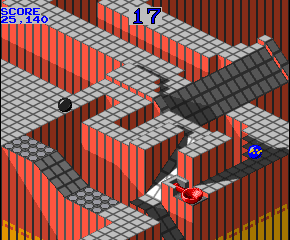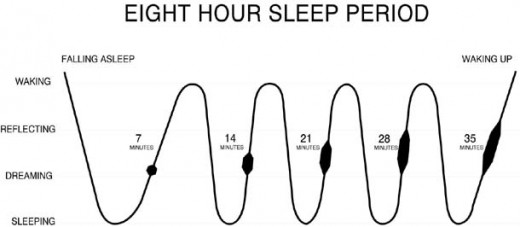Lucid Dreaming: 2 Weeks or Less THE GUIDE
DISCLAIMER:
I in no way own any of the software described in the following blog, nor am I affiliated with these companies. All of them are free to download if you already own a physical copy, and this site does not directly host any of these files.
There are tons of online courses, books... home kits... and products online which promise the user of these tools the ability to "control their dreams", for a price. Well- psssh, that just went out the window. In the following guide, you will learn several techniques involving motion, writing, and video games that can greatly boost your chances of have a lucid dream... in the period of under two weeks, if you're persistant of course. The world of speed learning just got free-er.
THE CLASSIC: SUDDENLY LUCID
It's a normal day, nothing really strange has happened but then again strange is only relative, whatever. You lay in bed, and about 1-2 hours later begin your first dream of the night. -But at some point you realize you're dreaming then everything gets vivid, and bam you are now the controller of your night-time experience. You can fly, seek advice, or even meet your favorite celebrity. However, In most cases the surprise is a bit too grand, and you immediately shock yourself awake instead- Confused but tickled pink. This is referred to as a DILD or a dream induced lucid dream, most people started here including myself, and like a drug- You want to do it again. Unfortunately you don't recall doing anything differently today, and you have no clue as to how to replicate it.
You start thinking to yourself; "Okay, if I can just figure out how to know I'm dreaming while it's still going on, then maybe..." Sounds simple, but now comes the question of; "But how do I do that?" By doing some minor reading, I came across something called "Reality Checking." I've done it- and by far is the easiest way to train yourself to recognize a dream while you're still in it.

REALITY CHECKING
Look down at one of you hands and count your fingers... There are 5 correct? Unless you've been in an accident or have a birth defect, which in that case- my condolences, but normally there are 5 on each hand. When I first did this, I felt utterly stupid, why would I be counting my fingers? I know how many I have. The funny thing of the matter is that we all know how many there are but for unexplainable reasons, we don't while we're dreaming. It's either 4 or 6 sometimes none. The idea behind this is that if you do this a few times daily, eventually you'll notice that you either count a different number, or can't count your perpetually moving hand. You must be dreaming.
I'm not 100% certain as to why this works, but my theory is that there are some things and information we assume must always be true while we are awake. The grass is ALWAYS green, the sky is ALWAYS blue, and when we push a button something ALWAYS happens. We assume these things to continuously be true, therefore our brains don't consciously need to process this information continuously.
There's a game for the NES (Nintendo Entertainment System) called Marble Madness... only 6 levels long. You basically roll a marble from the top to the "Goal" at the bottom, and that's it. The one thing that stood out to me about this classic game is that one of the levels has a caption: Everything You Know Is Wrong. On this level you start at the bottom and roll upward all of the ramps. The exact opposite of what you've been doing the entire time!
Think of a light switch.
You flip it and- TA DA! You can now see in the dark. You think; "I need to see." You walk over and flip the switch, without much thought at all. You don't stand there for a moment thinking; "Will the light turn on if I move this?" Like Nike, You just do it. Yet, when I'm in a dream that involves light switches and I choose to flip one, you got it- nothing happens. This is the newbie special novice beginners course in brain surgery. It's not that hard, and yes- you are now a brain surgeon. The list of things your brain auto pilots is rediculously long, there are millions of bits of information going through our brains each second, but we only consciously process a few hundred or thousand. Vehicles, computers, and any other form of machinery will appear to be broken or operate differently in a dream state, BECAUSE we act and assume that it must always work the same. But if we observe these things while being awake, then we'll observe them while we sleep as well.
I'm going to suggest this right now even though I'm aware that after reading this you will most likely try it. Don't get into a dream elevator. I live on the 12 floor of my complex and ride one at least 4 times a day. I've had it turn completely horizatal while in it still moving up, A floor that collapses when you stand on it wrong, a giant hole in the center of the floor, and the car cable snap while riding it- just to name a few. These series of incidents are however completely surreal and very exciting. The one side effect to this is that I now have a fear of elevators. Perhaps I'll start taking the stairs.
One thing most sites on dreaming ignore is that you don't need to use these exact methods, just the idea. So, what things do your brain take for granted that you assume must be right? Because while you're dreaming all of them are wrong.

HALFWAY THROUGH THE NIGHT
You wake up, it's either too hot, you're thirsty, or you just want to pee. -But as you do these things you can fully remember a dream you were just having. You go back to sleep, and just like that- back in a dream, sometimes the same one, sometimes a different one. There is also a technique for this. WBTB or Wake back to Bed is an induction method where you have an alarm of some kind to interrupt you during rem sleep. Since the amount of time being awake is so short, when you "go back to bed", you sleep cycle doesn't restart and you continue rem
sleep.
To "make yourself wake up" while you are in a deep stage of sleep you can set an alarm on your cell phone or clock, timing it to the relative time your body should be in rem. Remember, for everyone- it's different. Another way is to drink a really big glass of water before going to sleep. You're body wakes you up to remind you that you should go to a bathroom... or you wet your bed. This method does work really well, but does require some extra effort.
A variation to this one is that when you wake up, spend one hour reflecting on past dreams or reading a book about them before returning back to sleep. The more you think about it, the more you're likely to recall it. Many companies offer expensive induction products which do just this, save your money and drink some water.
Write It Down: You Won't Remember
My boyfriend has been taking up my interests in dreaming recently, and has set out to have lucid dreams himself. Every few days he tells me that he has remembered one, and he will remember it, but doesn't write it down. Don't be like him ;) Even I've had vivid dreams that I was sure I'd remember in heavy detail, but then at the end of the day when I finally chose to log it, the whole thing was gone. The same thing is happening to him right now. Keep a notebook or some scratch paper where you can reach it without getting up, and a pen.
This one's a little difficult. Instead of waking up, cursing the sun and immediately trying to go back to sleep, spend 5 minutes writting your dream down. You'll be amazed at how fast you can forget a dream. Average time is about one minute, as a plus- try to keep your movement to minimal. Moving around helps with forgetting. It does take some getting used to, but is one of the most beneficial assets you can have when lucid dreaming. Here's why:
1) You now have dream symbols that you can get interpreted to know what your dream means
2) Overtime you will notice patterns of things that only happen to you when you're dreaming which in turn you can use for reality checks
3) After several dreams, you may be able to begin mapping where certain places are in relation to dreams of a similar area. AND be able to go back to them later
These are only some of the things I use my "Dream Diary" for. The list is endless, so why not have data that you created yourself? Dream diaries do work, it keeps your mind focused on dreaming, and trains your body overtime to even have more dreams so that they can be
written down.
One set back that I've noticed is that you may not think you have enough information even worth mentioning nonetheless writting. False. Every piece of info counts, no matter how small or insignificant it may seem at the time. A color, a thing, an emotion doesn't matter- It's still information, and with the randomness of our dreams worlds, may actually be useful later. Even 2 things or a list will help. Given, some of my entries do go on for pages, but you're not writing a manifesto- be quick, because if unless you do this enough your dream memory isn't trained. You are writing your dreams down so that you can review and opinion-ize them later.
A WILD NIGHT
WILDS or Wake Induce Lucid Dreams are just what the acronym describe, they're wild. Among the three DILD and WBTB being the other two, this is a really really hard technique to do, and I personally don't suggest this one for anyone who doesn't meditate regularly. How it works is that you go from being awake to being asleep, the catch is that you must remain conscious while your body falls asleep.
This is the first method I tried when I began getting into dreaming. I'd lay in bed trying to keep my awareness then a few hours later, still be laying in bed not asleep at all. I bet many of you have at least tried this once- Unfortunately this is an advanced technique. The hurdle with this one in particular is that your mind needs to be at such a lowered wavelength that it tricks your mind and body into thinking that you're asleep. At the same time awake enough to not just "fall asleep". Please take this warning, it will save you several night's of trying to force yourself lucid. You can always try it later.
AN HOUR BEFORE BED: Affirmations
Get out a sheet of paper class, and write one of these statements down. Heck, you definately can make your own but for the sake of the exercise...
I lucid dream every night
I recall all of my dreams
The next thing I will experience will be a dream
I'm dreaming
These are called affirmations, and by writing them down you are raising your chances of doing exactly what the affirmation conveys. Spend 10 minutes or so about an hour before you go to sleep writing one over and over. Even though these things aren't necessarily true, the idea behind this is that we are what we think, and our dominant thoughts choose our reality. Your arm may get tired, but don't give up!
SOFTWARE:
Unless you intend on using a program everyday, don't spend money on software that promises to help you attain lucidity. The best things in life are still free. Below is my short list of programs that are free for use that may help keep your motivation keen on having more dreams.
LSD Dream Emulator: PlayStation 1:
A video game where you all you do is wander through a dream-like lanscape based on a 10 year long dream diary. You bump into places, people, and things, thus "teleporting" you to another place in the dream world. After about 10 minutes you wake up, and a chart marks down what type of dream you were just having. It's a very fun way to keep dreaming on the mind. This is available as a downloadable rom that you can play on a pc emulator. So make sure you have a solid copy before downloading!
Virtual Hypnotist: PC:
Hypnotize yourself with affirmations that you can create played back to you using text to speech, voice recognition, binural beats, visuals, music and adjustable audio to create your own subliminal messages that you can play back to yourself. The net offers many subliminal tracks that promise changed thought patterns, but they usually cost per track. This offers that and much more completely free.
I Daily Diary: PC:
is a free diary program that allows you to keep multiple diaries, formatting options including images and links, upload as web page, and even an in text search function among other things. Since dream diaries should be easily accessable, I would suggest this for keeping a master log of your dreams after writting them down. For people with bad handwriting like myself, it gives me a neat way of having large quantities of organized information to easily compare one entry to another. There is a pro version you can buy, but almost all of the functions work in this one.
Well, there you go!
Not one, two, but several things you can do to greatly increase your chances of going lucid. If you do some or many of these regularly, you can be sure to lucid dream in under two weeks- and it doesn't cost you a penny!
Cited
Brad And Jordan. "The Adventures of Brad And Jordan." 28 Jan 2008. Online image. Blast from the Past. 21 May 2010.
<http://adventuresofbradandjordan.com/blog/wp-content/uploads/2008/01/marble_madness.jpeg>.
Keyserling, Arnold. R.C.L. "School of Wisdom® Series: Volume 2" No date. Online image.
CHAPTER 4: BRAIN AND MIND. 21 May 2010.
<http://www.chanceandchoice.com/sleep.jpg>.
"Let's Play LSD Dream 001-The Trip Begins" February 2005. 12 December 2008.
<http://www.youtube.com/watch?v=qUzxbmduww8>.








